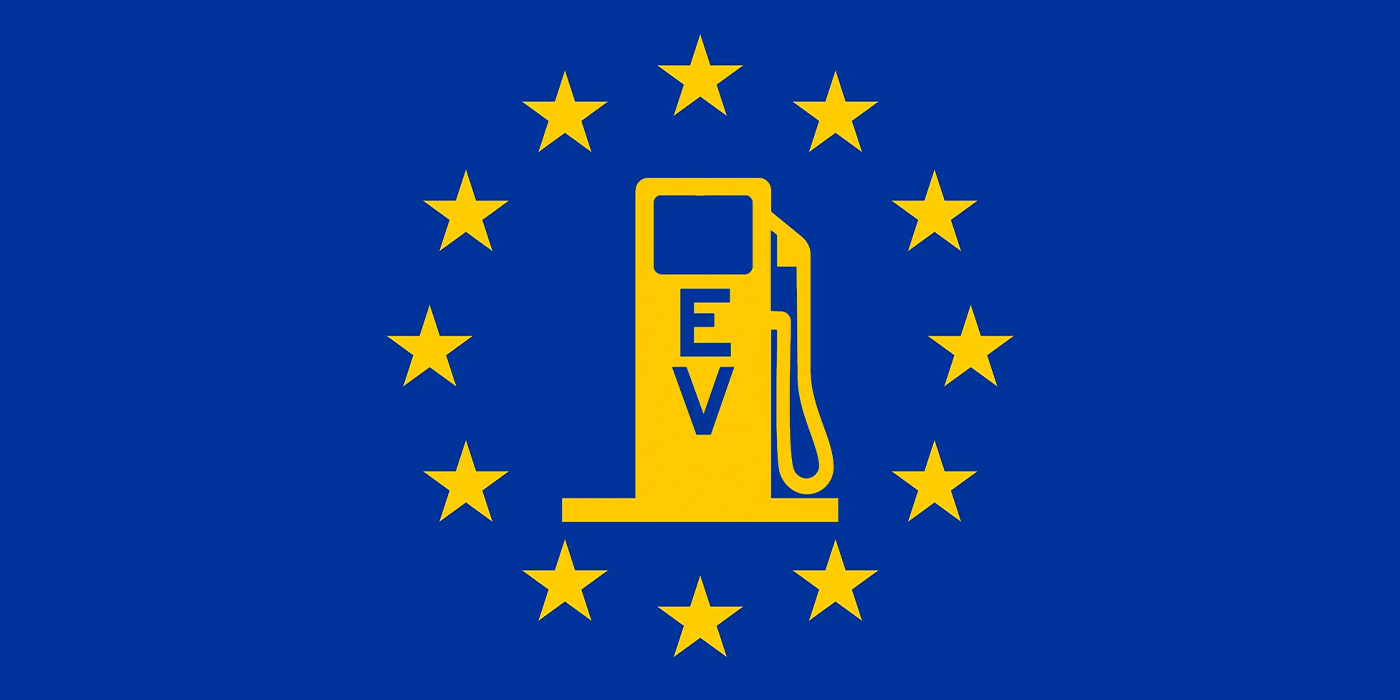EU officially inks complete ban on new combustion vehicles from 2035 onward

Following over five years of debate and a steadfast proposal introduced last year, the EU has agreed upon its first terms under a “Fit for 55” package to significantly reduce carbon emissions in Europe and achieve climate neutrality by 2050. The EU agreement increases required cuts to carbon emissions by 2030 and issues a complete ban on new combustion cars and vans from 2035 onward.
The post EU officially inks complete ban on new combustion vehicles from 2035 onward appeared first on Electrek.
Following over five years of debate and a steadfast proposal introduced last year, the EU has agreed upon its first terms under a “Fit for 55” package to significantly reduce carbon emissions in Europe and achieve climate neutrality by 2050. The EU agreement increases required cuts to carbon emissions by 2030 and issues a complete ban on new combustion cars and vans from 2035 onward.
The EU has been working to establish a wide ban on combustion vehicles for years now and is finally making some legislative headway. Countries like Germany have embraced a ban on new combustion vehicle sales as far back as 2016 and have since been joined by other countries like France and the Netherlands, including many of their respective local automakers.
The ban exists under the EU’s larger “Fit for 55” strategy, which aims to reduce greenhouse emissions across its block of members by 55% by 2030, compared to 2021 numbers. This strategy has previously been criticized by conservative groups in the European Union as well as some automakers that believe such deadlines are simply not possible.
Others, like Bentley, Mercedes-Benz, Volkswagen Group, Ford, and Jaguar are all heavily onboard and have already begun pivoting their global production strategies toward becoming all-electric. Stellantis is even following suit, despite previous pessimistic comments from its CEO Carlos Tavares.
Volvo Cars has taken its carbon-cutting even further, announcing an exit from the European Automobile Manufacturer’s Association (ACEA) at the end of this year, stating that the long-running automotive lobby’s benchmarks are not ambitious enough. Stellantis is also cutting ties with the ACEA, but instead cited “challenges of future mobility and a shift away from traditional lobbying activity.”
Whether these EU countries or their local automakers believe a combustion ban by 2035 is possible or not, the legal steps to enforce it are underway, marking an epoch in the history of transportation that sets the stage for a future in which the EV is king.
EU combustion ban
According to a press release from The Council of the European Union, it has reached a provisional agreement with European Parliament to implement stricter CO2 emission standards for new cars and vans. Under the terms of this first agreed upon “Fit for 55” proposal, all EU automakers must reach a zero-emission target for new vehicle sales by 2035.
The decision means that new combustion cars will be banned from registered use on EU roads after 2035. These proposals amend existing rules first laid out in 2019. The aforementioned 55% reduction in carbon emissions by 2030 is also a new increase from the previous goal of 37.5% compared to 2021 numbers. Anna Hubá?ková, Czech minister of environment on the EU council, spoke:
Closing a first deal on a proposal from the ‘Fit for 55’ package is a strong signal that the EU is determined to make progress towards climate neutrality and the green transition. Zero-emission mobility will be a building block for slowing down climate change that can create severe disruptions in many sectors of our society, including environment, migration, food security and the economy.
According to the EU council, there will be some exceptions to the 2035 combustion ban. For example, Lamborghini, which is a relatively smaller combustion automaker with limited output, will receive an extra year to reach the outlined climate targets. Other alternatives like vehicles operating entirely on CO2-neutral fuels may still be able to seek new registrations after 2035. That specific proposal is still pending, however.
For now, new combustion vehicles will see a ban in the EU by 2035, and luckily, many automakers are already well on their way to bringing their CO2 emissions down to zero, but they’ll need to speed up for the benefit of the entire planet.
Across the pond, the state of California recently enacted a similar expiry for combustion vehicles. Considering 15 other states follow the same zero-emission regulations enacted in California and two more accept the state’s Low Emission Vehicle (LEV) regulations, you can expect those territories to also adopt the 2035 ban.
Section 177 of the Clean Air Act allows California to set its own emission standards stronger than the federal government while allowing other states to adopt those same standards. This means that as EV adoption continues to grow and more states back an end date for gasoline vehicles, we could soon see a federal ban on combustion, similar to the EU.
Automakers can whine all they want about the issues these bans may present on the global economy in the short term, but there is no point in talking about the economy if we don’t have a livable planet to economize. Even with these latest accelerations, we are still quite behind the eight ball on climate change, but news like this is of course encouraging.
FTC: We use income earning auto affiliate links. More.
Subscribe to Electrek on YouTube for exclusive videos and subscribe to the podcast.

